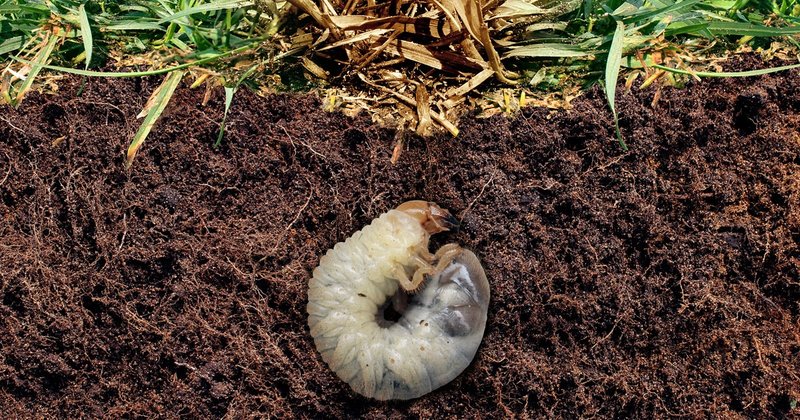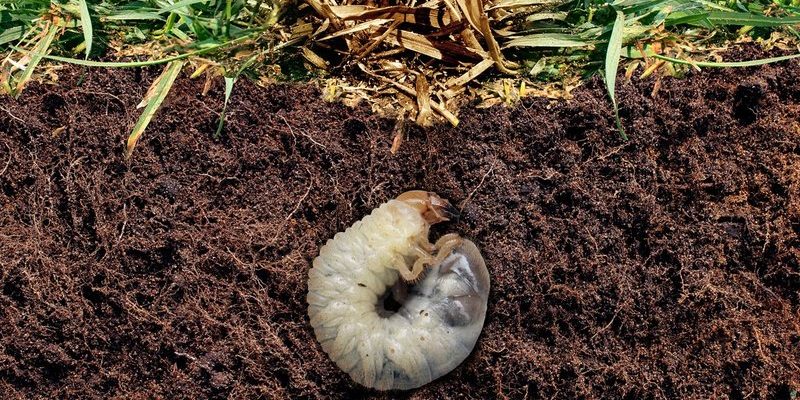
Imagine your lawn as a cozy place for summer barbecues, relaxing afternoons, and kids playing games. You want it to be inviting, not a buffet for grubs! Timing is everything when it comes to grub control. If you apply the treatment too early or too late, you could end up wasting your effort and money. It’s like trying to catch a train that’s already left the station. Let’s break down the best times to apply grub control treatments and what you need to know to keep your lawn in top shape.
Understanding Grub Lifecycle
Before diving into when to apply grub control, it helps to understand the life cycle of grubs. Grubs are the larvae of beetles, and they typically go through a few key stages: egg, larva, pupa, and adult beetle. **Knowing where they are in this cycle can help you decide when to act**.
Grubs usually lay their eggs in late spring to early summer, which means by the time July rolls around, the eggs hatch into larvae. These little critters start munching away at your grass roots, causing the telltale brown patches. As fall approaches, they start burrowing deeper into the soil to prepare for winter, making it crucial to treat your lawn before they get too comfortable.
So, what does this mean for you? Well, understanding their lifecycle allows you to time your treatments effectively. It’s like knowing when your kids will be home for dinner—you want to have the food ready at just the right moment.
Best Time for Preventative Grub Control Treatments
When it comes to applying grub control, the best time for prevention is in late spring to early summer. This is when grubs are just about to hatch from their eggs. Applying a preventative treatment around this time helps stop the eggs from developing into those destructive larvae.
You might be wondering what types of treatments to use. There are chemical options and natural alternatives. **Chemical treatments often contain insect growth regulators (IGRs)** that disrupt the hatching process. On the other hand, natural products might include beneficial nematodes, tiny worms that invade and kill grubs.
Timing your application is crucial. If you wait until the larvae are already established in your lawn, it becomes much harder to control the problem. Think of it as locking the door before the storm hits; it’s much easier to prevent damage than to fix it afterward!
Signs Your Lawn Needs Grub Control
So how do you know if you need grub control? There are several signs to look for. First, keep an eye out for brown patches or areas where the grass looks unhealthy. If you can easily lift the grass like a carpet, it’s likely that grubs are munching away at the roots below.
Another indicator is if you notice an increase in birds or animals digging around in your yard. They might be after those delicious grubs, which means your lawn could be their buffet. If you suspect you have grubs but aren’t sure, a simple lawn test can help. Dig about a square foot of grass up to check for grubs.
If you do find grubs, it’s time to act! **Early detection means you can use less product and be more effective in your treatment**, making your lawn healthier in the long run.
Applying Grub Control in Late Summer and Fall
If you missed the earlier treatment window, all hope isn’t lost! You can still apply grub control in late summer and early fall. This timing can help manage the existing grub population before they burrow deeper into the soil for winter.
**Remember, grub control treatments in late summer and fall should focus on killing existing larvae** rather than preventing new ones since the eggs have already been laid. You’ll want to look for curative treatments that target the active grubs in your lawn.
Applying the right product can give your lawn a fighting chance before winter sets in. Think of it like a last-minute shopping spree before a big snowstorm; you’re just trying to stock up on what you need to survive the cold!
Choosing the Right Grub Control Product
Now that you know when to apply grub control treatments, you might be wondering which products to use. There are several options out there. Chemical treatments are popular and typically provide quick results. However, if you prefer natural solutions, many homeowners opt for nematodes or other organic materials.
When choosing a product, it’s essential to read the label. Look for information about the active ingredients and the specific types of grubs they target. If you’re unsure, don’t hesitate to ask for help at your local gardening store. **Getting the right product is crucial for effective treatment.**
Also, keep in mind that some products are better suited for specific seasons. For instance, a product effective in late spring may not work as well in late summer. Knowing your timing and knowing your product can make all the difference in keeping your lawn healthy.
Tips for Effective Application
Once you’ve picked the right product and timing, it’s time to apply your grub control treatment effectively. Here are some handy tips to ensure you’re getting the most bang for your buck.
1. **Follow the Instructions**: Always read and follow the application instructions on the label. Each product may have different directions for best results.
2. **Water After Application**: Most treatments need to be watered in after application. This helps activate the product and ensures it gets down to where the grubs are hiding.
3. **Choose the Right Weather**: Try to apply treatments on dry days. Wet conditions can wash away the product, and extreme heat can degrade its effectiveness.
4. **Monitor Your Lawn**: Keep an eye on your lawn even after treatment. If brown patches return, you might need to reassess your timing or product selection.
By taking these extra steps, you’ll be giving your lawn the best chance of staying healthy and grub-free.
Aftercare and Prevention
After you apply grub control, you might think your job is done. Not quite! To keep your lawn thriving, proper aftercare and prevention are essential. Make sure to continue watering your lawn as needed, especially during dry spells. Healthy, hydrated grass is more resilient against pests.
Also, consider routine lawn care practices such as aerating your lawn, maintaining healthy soil, and keeping up with fertilization schedules. Healthy grass is less appealing to grubs and more resistant to damage.
Finally, keeping an eye on your lawn and being proactive will help. If you notice any signs of grubs again in the future, don’t wait to act. Just like maintaining any relationship, it requires some attention!
Knowing when to apply grub control treatments is all about timing, awareness, and good lawn care habits. Start with understanding the grub life cycle and pay attention to the signs of infestation. Late spring and early summer are your golden windows for preventive treatments, while late summer to early fall can tackle existing grubs.
By selecting the right products, applying them effectively, and maintaining your lawn, you’ll be on your way to a lush, green space that’s free from grubs. Remember, a healthy lawn is not just about looks—it’s about the memories you’ll create in that beautiful outdoor space. So grab your tools, and give your lawn the care it deserves!

